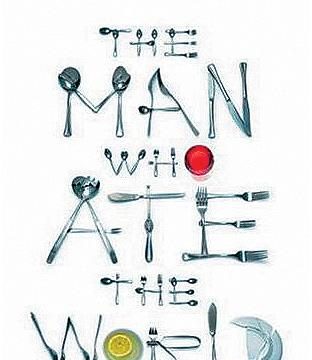The heterogeneity of the eating experience and the thrill of culinary discovery are central to an award-winning food critic’s life. So it’s understandable that Jay Rayner was dismayed when a celebrity chef told him that the coveted Michelin star ratings were “nothing more than a guarantee that the ultra-rich could eat the same food anywhere in the world” — that the global food revolution was all about safe consistency.
Determined to prove this idea wrong — and to show that great chefs could preserve their creativity in the face of rampant globalisation — Rayner set off on a worldwide hunt for ‘the ultimate meal’. His travels took him through Las Vegas, Moscow, Dubai, Tokyo, London and New York, before ending in — where else? — Paris, where he conducted a heroic weeklong eat-a-thon at seven of the world’s fanciest restaurants. By this time, inevitably, the journey was more important than the destination (what is the ‘perfect dinner’ anyway?).
The Man Who Ate the World provides a solid insider’s view of the world of fine dining. Rayner gives us many anecdotes (did you know about the Moscow restaurant that discontinued its Chinese cuisine after the souring of Sino-Soviet relations but allowed diners to eat Russian sausages with chopsticks?) and nice pen-portraits of people and places. He ruminates on the morality of eating obscenely expensive food while millions of people around the world starve, and he expresses strong views on such subjects as ‘authenticity’ being prioritised over quality.
The thing to understand about a book written by someone who eats for a living (and who has become famous for doing this) is that it can’t be of much practical use to those of us who are serious foodies but in an unprofessional capacity. To Rayner’s credit, he acknowledges the advantages and constraints of his job, both of which distance him from the ordinary diner: having access to important contacts in every city he travels to; eating in the presence of a high-profile chef or restaurateur who’s scrutinising his every move; having to man up for a 12-course meal even when he isn’t feeling very hungry or enthusiastic.
In this context, I was impressed by the sagacity of Rayner’s wife Pat, who halfheartedly accompanies him to fancy places that are more about the ‘experience’ than the food. “The first time you try high-end food it’s astounding, but after that you are just grading your experiences against themselves,” says this pragmatic woman. Though her husband’s book has undoubted virtues (not the least being Rayner’s wit, candour and breadth of knowledge), I would gladly trade it in for a notepad filled with her views on the perfect meal.
Hunt for the ultimate meal
Rayner provides an insider's view of the world of fine dining

Hunt for the ultimate meal
Hunt for the ultimate meal



